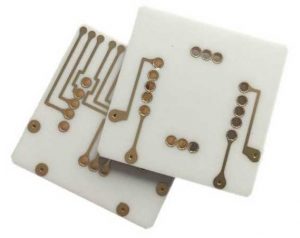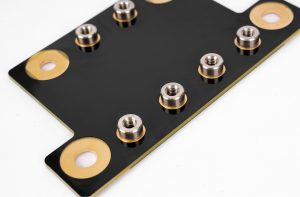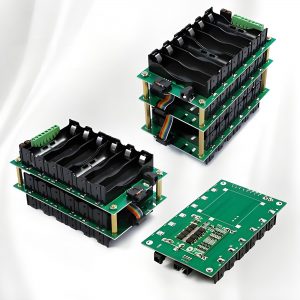Transparent heating film is revolutionizing how we approach heating solutions. Whether you’re looking to warm up a window, a headlight, or a glass surface, transparent heating film offers a sleek and efficient way to provide warmth without compromising visibility. In this article, we’ll dive deep into what transparent heating film is, its materials, types, applications, and benefits it offers for a range of uses.

What Is Transparent Heating Film?
Transparent heating film is a specialized, thin, flexible layer that generates heat when an electric current passes through it. It is designed to be almost invisible, making it ideal for use in applications where traditional heating elements would be intrusive or unsightly. The film is often used in applications like heated windows, automotive headlamps, and glass surfaces where both transparency and heat generation are required.
The film operates by using materials that convert electrical energy into heat, providing a uniform warmth across the surface. This can help to defrost or prevent condensation on windows, for example, or provide heat to glass surfaces in various environments.
What Is the Material of the Transparent Heating Film?
The materials used in transparent heating films are crucial for their performance. Typically, transparent heating films are made from materials such as carbon, polyimide, or metalized films. These materials are chosen for their excellent conductivity and durability.
Carbon-based films are widely used due to their ability to produce heat efficiently while maintaining transparency. The carbon fibers are embedded in the film to allow for a smooth, uniform heat distribution.
Polyimide films are another popular material. Known for their durability and high heat tolerance, polyimide films are often used in high-performance applications, including automotive and industrial settings.
Metalized films, which are coated with a thin layer of metal, offer high conductivity and are effective at generating heat. These films tend to be more robust and can handle higher power levels than some carbon-based films.
These materials are carefully selected to ensure the film is both effective at generating heat and able to maintain the desired transparency.
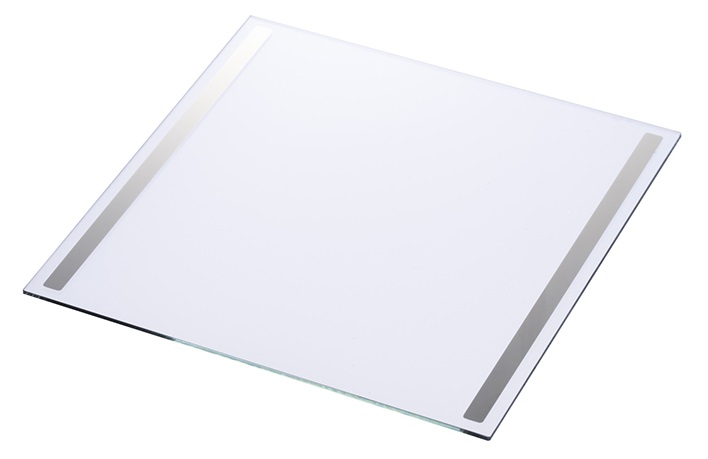
What Are the Different Types of Transparent Heating Films Available?
There are several types of transparent heating films, each designed to suit different needs. Some of the most common types include:
Clear Heating Film: These films are designed for applications where visibility is crucial. They are often used in vehicles for defrosting windshields and side windows. The clear nature of the film ensures that there is no distortion of visibility while still providing heat.
Transparent Electric Heating Film: This type of film uses electrical energy to generate heat and is most commonly used for indoor applications, such as in heated windows or glass partitions.
Headlight Heater Film: Specifically designed for automotive use, this film is applied to headlights to prevent them from fogging up or icing over. This is particularly useful in colder climates or for vehicles that are parked for long periods.
Electrically Heated Window Film: This film is used in windows for both residential and commercial buildings. It helps prevent fogging and condensation, ensuring clear views and improving overall comfort.
Each of these films serves a different function, but they all share the same core technology of transparent heating.
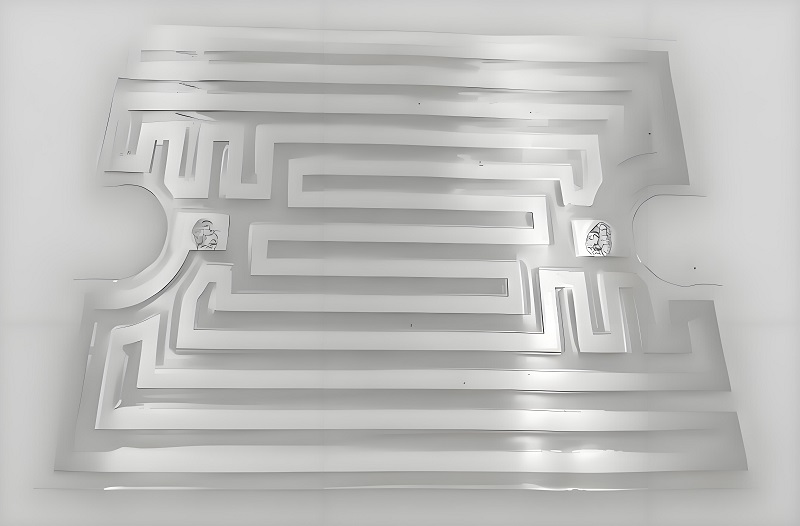
Where Can Transparent Heating Film Be Used?
Transparent heating films are incredibly versatile and can be used in a wide range of applications. Some common uses include:
Automotive Applications: Transparent heating film is often applied to car windows and headlights to prevent fogging, ice buildup, and condensation. This enhances visibility and safety for drivers.
Heated Glass Surfaces: Transparent heating films are also used for glass partitions, windows, and even glass tables. These films prevent fogging and can help maintain a comfortable temperature in spaces that use glass heavily, such as conservatories or sunrooms.
De-Icing and Anti-Frost Applications: Transparent heating films are frequently used in areas that are exposed to cold weather. They are often applied to glass surfaces, mirrors, and other surfaces to keep them clear and free of ice or frost.
Smart Glass and Heated Displays: Transparent heating films can be integrated into smart glass technologies. These films provide heating while maintaining the functionality of the glass, such as allowing light to pass through while keeping surfaces at a consistent temperature.
Can Transparent Heating Films Be Used in a Cooling Chamber That Is Cooled to -20°C?
Yes, transparent heating films can be used in cooling chambers or environments where temperatures drop to -20°C. These films are specifically designed to handle extreme temperatures, both hot and cold. When used in such low-temperature environments, transparent heating films can prevent frost buildup, condensation, and ensure that glass surfaces remain clear.
However, it’s important to select a transparent heating film with the right material and specifications for the intended use. Films made with polyimide or metalized layers are better suited for environments that experience extreme temperatures, providing consistent heating performance even in sub-zero conditions.
Can Transparent Heating Film Be Customized for Specific Uses?
One of the major advantages of transparent heating films is their customizability. These films can be tailored to suit specific applications, such as the required size, voltage, or power output. Whether you need a heated glass film for a large commercial window or a clear heating film for a car’s windshield, transparent heating films can be designed to meet your unique needs. Customization options include:
Size and Shape: Transparent heating films can be cut or shaped to fit specific surfaces, whether it’s a small area like a side mirror or a larger area like a floor-to-ceiling window.
Power and Voltage: The voltage and power levels can be adjusted to suit the needs of the application. For example, a headlight heater film may require higher power to generate heat efficiently, while a heated window film might need a more moderate power level.
Thickness and Transparency: The film’s thickness can be customized for different applications, depending on how much heat is needed. You can also choose the level of transparency based on the environment in which the film will be used.
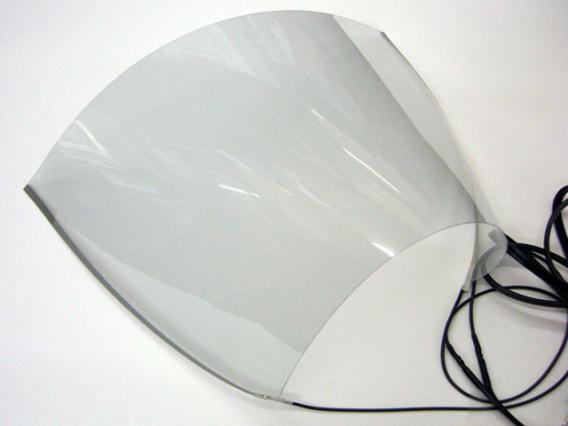
How Does Transparent Heating Film Work?
Transparent heating film works by using a thin layer of conductive material, typically carbon or metal, that is integrated into the film. When an electric current passes through the film, it creates heat through resistance. The conductive materials allow for even heat distribution across the surface, ensuring consistent performance.
This heat is then transferred to the surface the film is applied to, whether it’s glass, plastic, or another transparent material. Because the film is so thin, it doesn’t block light or reduce visibility, making it an ideal choice for applications where aesthetics and functionality need to be balanced.
What Are the Advantages of Using Transparent Heating Film?
Transparent heating films offer a variety of advantages that make them an attractive choice for many applications:
Energy Efficiency: Transparent heating films are highly energy-efficient. They provide targeted heating without wasting energy on unnecessary areas, making them more cost-effective than traditional heating methods.
Versatility: These films can be used in a wide range of settings, from automotive to residential and commercial applications, making them a flexible solution for many different heating needs.
Invisible Heating: One of the biggest advantages of transparent heating films is that they are nearly invisible. This allows for discreet heating solutions that do not interfere with the aesthetics of a space or vehicle.
Safety and Durability: Transparent heating films are designed with safety in mind. They are built to withstand wear and tear, providing long-lasting performance even in harsh environments.
Easy Installation: Installing transparent heating films is relatively simple and can often be done by professionals or even DIYers, depending on the application. This makes them an accessible heating solution for a wide range of users.
In summary, transparent heating film is a game-changing technology that offers efficient, flexible, and visually unobtrusive heating solutions. With a wide variety of uses—from defrosting automotive windows to warming glass surfaces in homes or offices—transparent heating films provide an innovative way to heat spaces without compromising on aesthetics or functionality. Transparent heating films are a great option to consider for modern heating solutions, if you have any questions or inquiries, don’t hesitate to reach out to us at sales@bestpcbs.com. Best Technology combines high-quality Transparent heating films products with fast delivery to ensure your needs are met.



